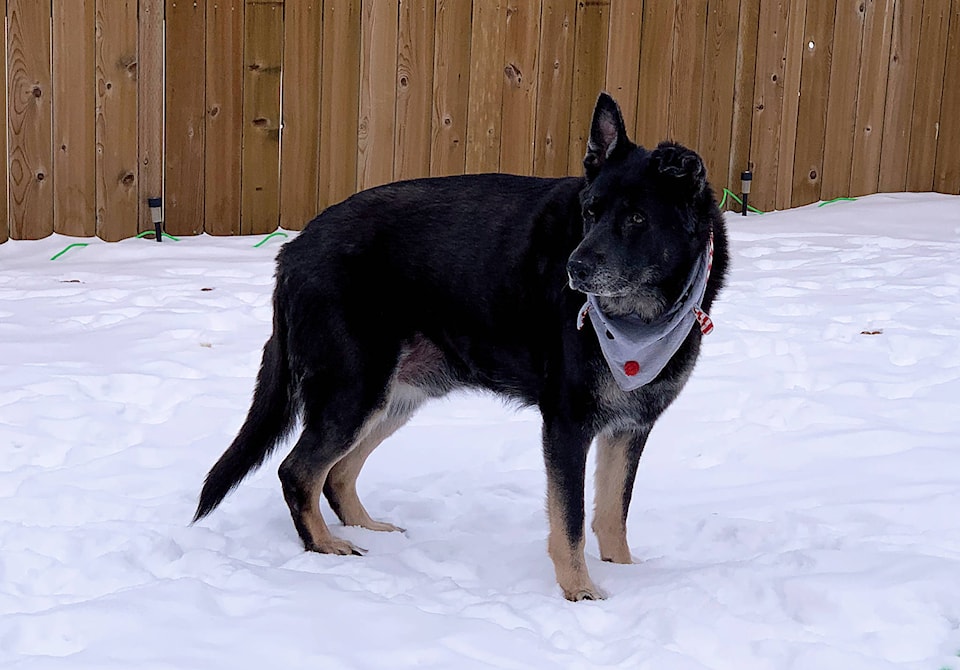Even our four-legged friends with fur feel the chills of the winter months.
Dr. Sandy Jameson at Sylvan Lake Veterinary Clinic says having a look at the temperature for yourself as well as your furry friends is really important.
“I think about ourselves, you know, how long we would want to be outside and take that into perspective a little bit,” said Jameson. “At -10 C it’s probably safe for your dog and you to be outside for a reasonable amount of time, when we’re getting down to -20 C it probably needs to be a little bit shorter [and] -30 C I would be definitely more cautious.”
She said the breed of dog, for example a Malamute compared to a Chihuahua, will be able handle varying weather conditions differently or better.
With smaller breeds like the Chihuahua a trip to the bathroom at -30 C is going to be super quick, but it would be helpful to train them to wear a coat and booties.
“I recommend practicing wearing the booties because if you only put them on when it’s cold sometimes they fall over and pretend they can’t move because they feel a bit strange,” explained Jameson.
On the other hand, Jameson said, larger dogs like huskies and Malamutes have really thick hair coats which serves as good insulation from the cold.
“That being said, if you have a husky that regularly lives inside he’s not going to have the same hair coat as some of these sled dogs that are running the Iditarod where they essentially are outside all the time,” she added.
Jameson continued to say dogs who are inside part of the time need to be treated differently as they are not as well adjusted and haven’t built the coat to stay out for a long time in the -30 temperatures.
If your dog has been outside in the cold temperatures for too long they will start showing signs of feeling distress.
Lots of dogs will hold up a foot or two because they are getting cold, they will display shivering type behaviour, whining, slowing down or anxiety, said Jameson of what the distress may look like.
Outside of the cold winter can pose other risks such as slippery walking conditions, de-icers and a partially frozen lake.
Slippery conditions mean pet owners need to take extra care when walking their dogs, especially older animals with arthritis or other muscle and joint issues.
Icy walking conditions are often combated with slip preventatives such as salt being put down on the sidewalks.
Jameson says these preventatives can potentially cause irritation to your pets feet and recommends wiping your dog’s paws when they come back inside so it cannot cause more irritation or ended up ingested if they lick it off.
“There are some pet safe de-icers that can be used, so if you’re using them then that’s something you can use to help mitigate that problem,” said Jameson, adding having your dog trained to wear booties will also protect them.
Additionally, she advises being very careful around the lake by using a leash or good recall when it is beginning to freeze as some dogs love the water and are unaware when the ice is unsafe.
During cases when you can’t walk your dog there are ways to keep their minds and bodies active and healthy, says Jameson.
“One thing I recommend to people when it’s winter time and they’re less active is that cutting back a little bit on their food so they’re not getting overweight is important,” advised Jameson.
Jameson says to keep her dog active she does activities with her in the house like hide-and-seek style games. There are also puzzle games a dog can solve for food or the ability to still play fetch depending on the size of your dog.
There are also indoor playground areas if you have a well socialized dog who plays well with others.
In the case of travelling with your four-legged friend make sure they are not being left to sit in the vehicle just like they shouldn’t be in the summer.
“Say you’re outside today, you’re driving somewhere and you stop and turn your vehicle off, you don’t have to sit in your vehicle for very long before it’s essentially like a refrigerator,” explained Jameson.
For our feline friends it is important we keep them inside and out of the elements as much as possible too, said Jameson.
Although some cats do go outside in the winter and they may find refuge under a vehicle as the engines are warm after it has been running.
“One way you can help prevent injuring a cat that’s maybe sheltering under your hood is just banging on your hood, make some loud noise, maybe beeping your horn to try and scare them out from under the hood before you start the vehicle,” she explained.
Finally, she said, good health care and regular physical exams are important to help detect any health problems as well as manage problems which may be affected by the stress of the cold weather.
